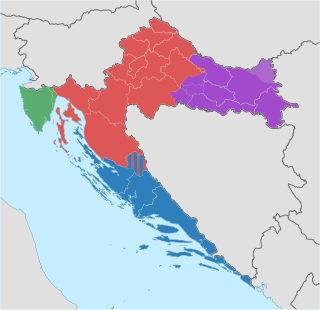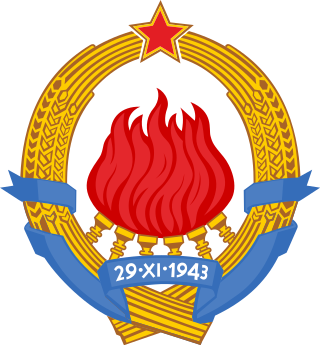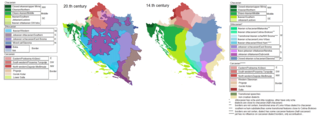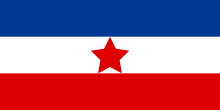
The Alliance of Primorje-Gorski Kotar is a minor Croatian liberal regionalist political party of Primorje-Gorski Kotar County.

Primorje – Gorski Kotar County is a county in western Croatia, most of it based in the historical and cultural region called Croatia proper and some of it in Istria, including the Bay of Kvarner, the surrounding Northern Croatian Littoral, and the mountainous region of Gorski Kotar. Its center is Rijeka. The county's population was 296,195 at the 2011 census.
A Kraj is the highest-level administrative unit in the Czech Republic and the Slovak Republic. For lack of other English expressions, the Slavic term is often translated as "province", "region", or "territory", although it approximately means "(part of) country", or "(part of) countryside". A kraj is subdivided into okresy ("districts").

Gorski Kotar is the mountainous region in Croatia between Karlovac and Rijeka. Because 63% of its surface is forested it is popularly called the green lungs of Croatia or Croatian Switzerland. The European route E65, which connects Budapest and Zagreb with the Adriatic Port of Rijeka, passes through the region.

Hreljin is a village in western Croatia, just northeast of Bakar and northwest of Kraljevica, above Bay of Bakar.

Mrkopalj is a village and a municipality in the mountainous part of Croatia in the region of Gorski Kotar, located south-east of Delnice and some 50 km east of Rijeka and 831 meters above sea level.

The Republic of Croatia is administratively organised into twenty counties, and is also traditionally divided into four historical and cultural regions: Croatia proper, Dalmatia, Istria, and Slavonia. These are further divided into other, smaller regions.

Croatian Littoral is a historical name for the region of Croatia comprising mostly the coastal areas between traditional Dalmatia to the south, Mountainous Croatia to the north, Istria and the Kvarner Gulf of the Adriatic Sea to the west. The term "Croatian Littoral" developed in the 18th and 19th centuries, reflecting the complex development of Croatia in historical and geographical terms.

In contemporary geography, the terms Central Croatia and Mountainous Croatia are used to describe most of the area sometimes historically known as Croatia or Croatia proper, one of the four historical regions of the Republic of Croatia, together with Dalmatia, Istria, and Slavonia. It is located between Slavonia in the east, the Adriatic Sea in the west, and Dalmatia to the south. The region is not officially defined, and its borders and extent are described differently by various sources. The term Central Croatia refers to the northeastern part, and the term Mountainous Croatia refers to the southwestern part of the territory; the far western part is known as the Croatian Littoral; likewise the terms 'Zagreb macroregion' and 'Rijeka macroregion' can be used instead. Central Croatia is the most significant economic area of the country, contributing well over 50% of Croatia's gross domestic product. The capital of the Republic of Croatia, Zagreb, is the largest city and most important economic centre in Central Croatia.

NK Pomorac 1921 is a Croatian football club based in Kostrena, a suburb of Rijeka which currently plays in Croatian third tier 3. HNL West. Kostrena is known for its maritime tradition, which is reflected in the club's name, as the word "pomorac" means "mariner" or "seaman" in English.

Yugoslavia had various administrative divisions throughout its 74 years of existence.
Grižane-Belgrad is a village in Primorje-Gorski Kotar County of Croatia. It is located near Crikvenica and Novi Vinodolski. It has a population of 953 and the post code HR-51244.

Younger Ikavian, also called Western Ikavian/Western Neoshtokavian Ikavian, or Bosnian–Dalmatian dialect, is a subdialect of Shtokavian Serbo-Croatian spoken primarily by Croats in Croatia, Bosnia and Herzegovina, Serbia and Italy, less by Bosniaks and rarely Serbs in Bosnia and Herzegovina. Most speakers use the Latin alphabet.
Veljko Kovačević was a Montenegrin general and writer.
The First League of Primorje-Gorski Kotar County or Prva županijska nogometna liga Primorsko-goranske županije (Croatian), or simply 1. ŽNL Primorsko-goranska, is the sixth level league in the Croatian football league system. The league was formed in 1992. First League of Primorje-Gorski Kotar County covers clubs from the Primorje-Gorski Kotar County. The winner is promoted to 4. HNL Rijeka.

The Memorial Centre Lipa Remembers is a museum commemorating the killing of 269 civilians - mostly elderly, women and children - in April 1944 in Lipa, Croatia. The massacre was perpetrated by the German military, together with Italian and Chetnik collaborationist forces.
The 4th Army of the Yugoslav Partisans was a Partisan army that operated in Yugoslavia during the last months of the Second World War.
Mate Blažina was a Croatian antifascist, military commander and Yugoslav National Hero. After the capitulation of Italy, he joined the partisan movement. He contributed to the liberation of Istria and Gorski Kotar, and for his bravery and actions was honored with the Order of the People's Hero and the Order of Bravery. Blažina died in action in Gorski Kotar, aged 20.

The 8th Kordun Assault Division was a Yugoslav Partisan division formed in Crevarska Strana on 22 November 1942. Upon on formation it consisted of 4th Kordun Brigade, 5th Kordun Brigade and 6th Littoral-Gora Brigade with total of around 4,200 soldiers. The division was commanded by Vlado Ćetković and its political commissar was Artur Turkulin. It took part in various Partisan operations in Croatia, Bosnia and Slovenia. It was declared an "Assault" division on 16 June 1944 by the Supreme Headquarters.
Local elections were held in Croatia on 25 May 2001. This was third local elections in Croatian since independence and for the first time since democratization.













